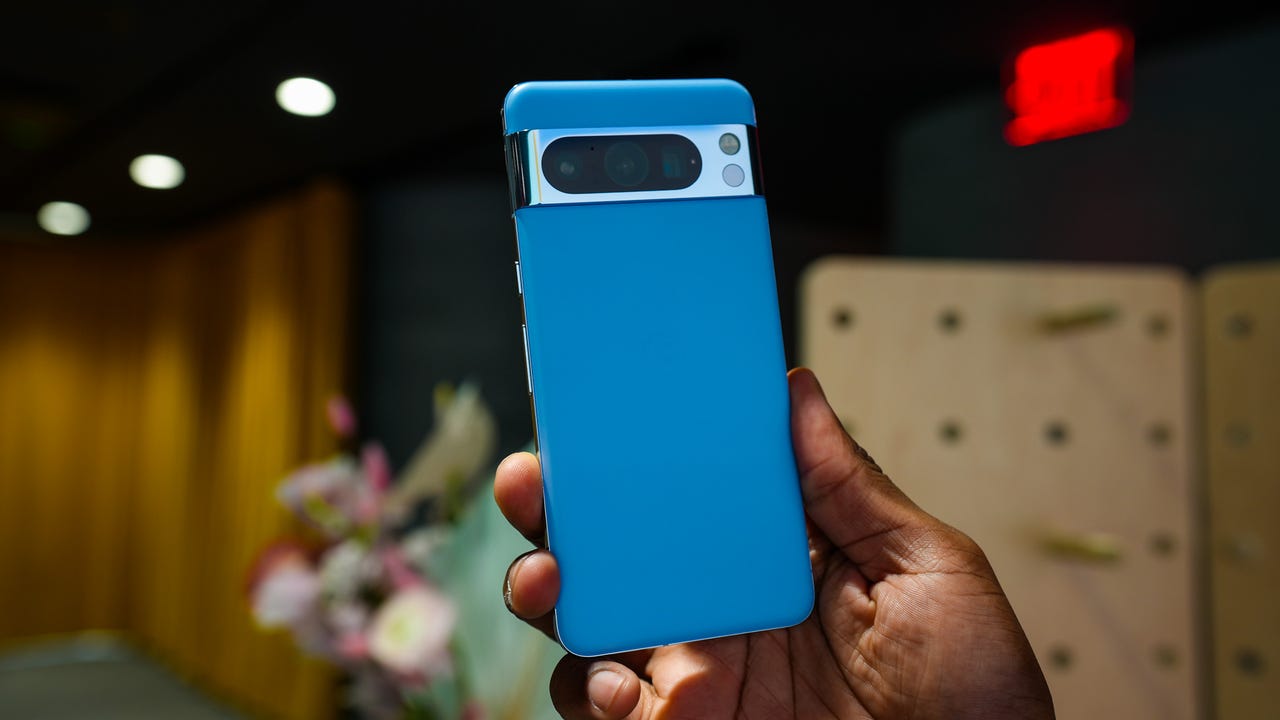'ZDNET Recommends': What exactly does it mean?
ZDNET's recommendations are based on many hours of testing, research, and comparison shopping. We gather data from the best available sources, including vendor and retailer listings as well as other relevant and independent reviews sites. And we pore over customer reviews to find out what matters to real people who already own and use the products and services we’re assessing.
When you click through from our site to a retailer and buy a product or service, we may earn affiliate commissions. This helps support our work, but does not affect what we cover or how, and it does not affect the price you pay. Neither ZDNET nor the author are compensated for these independent reviews. Indeed, we follow strict guidelines that ensure our editorial content is never influenced by advertisers.
ZDNET's editorial team writes on behalf of you, our reader. Our goal is to deliver the most accurate information and the most knowledgeable advice possible in order to help you make smarter buying decisions on tech gear and a wide array of products and services. Our editors thoroughly review and fact-check every article to ensure that our content meets the highest standards. If we have made an error or published misleading information, we will correct or clarify the article. If you see inaccuracies in our content, please report the mistake via this form.
How to use the Pixel 8 Pro thermometer for accurate temperature reading

I frequently have to check the temperature of the three aquariums in my home and the pond in my backyard. I used to depend on a kitchen thermometer (which also doubled as a cat play toy, thanks to the built-in laser pointer). However, I found that the device wasn't always accurate, especially when trying to discern the temperature of moving water.
But when Google announced the Pixel 8 Pro would include a temperature sensor, I thought nothing of it. I figured it was just another gimmick the phone didn't really need to have. So, when my Pixel 8 Pro arrived, I didn't bother with the thermometer app.
Also: Google Pixel 8 Pro vs. Pixel 7 Pro: Is it worth the upgrade?
That is… until one day I couldn't find my trusty, laser-pointing, fun-time thermometer. I did, however, have my phone with me. So, I pulled out the device, searched for the thermometer app, opened it, and checked the temperature of our pond.
And I was surprised at how easy and accurate the functionality was. Since then, I haven't bothered with my old thermometer.
The Pixel 8 Pro temperature sensor is very good at reading temperatures, with one exception. I've tried using my phone to check my body temperature and find it to always be five degrees lower. But it's consistently five degrees off.
With the Pixel 8 Pro Thermometer app, you can accurately test the temperature of:
- Food and organic items.
- Beverages and water.
- Cast iron.
- Ceramic and glass.
- Matte metal.
- Shiny metal.
- Plastic and rubber.
- Fabric.
- Wood.
- Walls and Windows.
To get the most accurate reading, it's important that you select the type of object you are checking. I've tested this and found the readings can be off by as much as three degrees when using the wrong category. Fortunately, the developers have made it fairly easy to switch.
Let me show you how to use the new Pixel 8 Pro Thermometer app, so you can get accurate temperature readings.
How to use the Pixel 8 Pro Thermometer
What you'll need: The only thing you'll need is a Pixel 8 Pro phone. You won't find this feature in the Pixel 8 or any other Pixel phone, as the temperature sensor was only added to the Pixel 8 Pro.
1. Open the Thermometer app
The first thing to do is open the Thermometer app. You'll find this listed in the Android App Drawer of your Pixel 8 Pro.
Look for the thermometer icon and you'll find the Thermometer app.
2. Tap Object Temperature
I'm not certain why the developers added this step (maybe they're planning on more options in the future?), but on the resulting page, tap Object Temperature.
Hopefully, Google will add a new category (like Living Objects) in the future.
3. Open the category selector
At the bottom of the next page, tap Default.
Although you can use Default, you'll find the app is more accurate if you chose the correct category.
4. Choose your category
From the resulting pop-up, tap the category that matches the item you want to check and then tap Done.
Select the proper category for the object you want to test.
5. Check the temperature
Place the phone at least two inches (5 cm) away from the object you want to test and then tap the large blue button labeled Tap To Measure. The app will immediately report the temperature of whatever it was you were measuring. If you want to re-check, tap the circle/arrow below the temperature and then tap the Tap To Measure button again.
A successful measure of my office aquarium tells me I need to lower the temperature just a bit.
I've found the Pixel 8 Pro temperature sensor to be as accurate as my old kitchen thermometer. And given my phone is almost always within reach, using this tool is far more convenient. Just don't expect accurate results when measuring human temperatures. Hopefully, Google will fix this issue in future releases.
